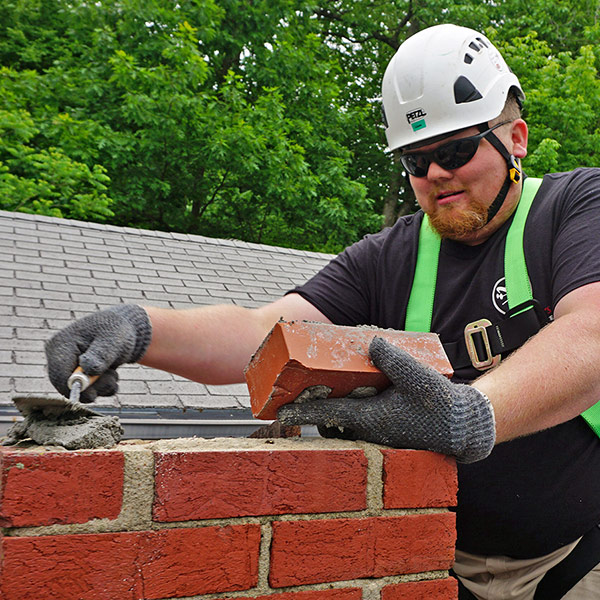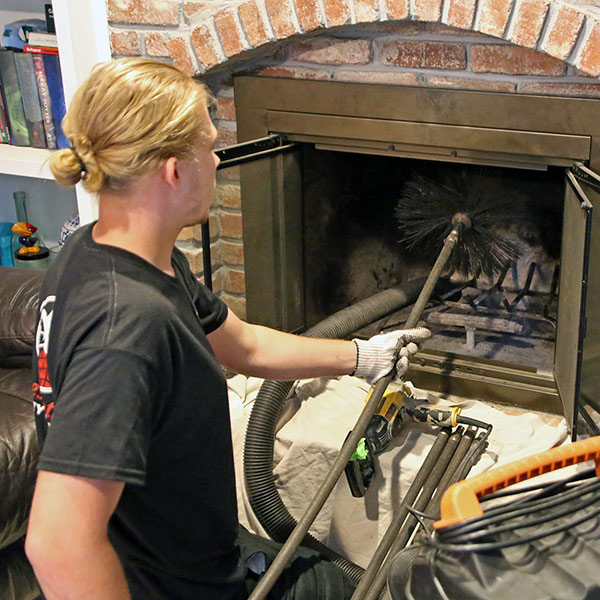5 Things Chimney Sweeps Look at when Examining Your Chimney
When you have a certified professional chimney sweep look over your chimney during an annual inspection, you’re going to get a thorough understanding of your chimney’s condition and details on any repair work that might be necessary.
Chimney sweeps with certifications through the Chimney Safety Institute of America (CSIA) have advanced knowledge of chimney systems and inspects for venting sufficiency, structural soundness, and the integrity of a chimney’s components.
Here are five key areas your chimney sweep will closely examine during a chimney inspection.
 The chimney structure
The chimney structure
The bricks and mortar that make up your chimney structure must be undamaged and put together correctly in order for it to operate safely. Chimney sweeps are careful to look for signs of cracking in the masonry, crumbling mortar joints, loose bricks, and evidence of water infiltration.
A proper chimney inspection will also check for a leaning or unstable chimney, which could be the result of brick damage, a badly built chimney footing, and other causes.
Safe clearance
Chimney sweeps ensure that the heat and toxic gases created during combustion are properly vented and will not touch or affect any vulnerable materials of your home adjacent to the chimney/fireplace. Damage to fireplace bricks and internal flue damage can allow flames, acidic substances, and dangerous gases to move into the house.
Integrity of components
Part of a professional chimney examination is checking components. Chimney crowns, caps, flashing, dampers, and other devices all serve to help the chimney operate safely and efficiently. When these components are rusted, broken, cracked, or warped, the result could be a serious water leak, which can cause widespread damage to the chimney system and the home.
Creosote buildup in the flue
Creosote is a flammable substance created when wood fires are burned. Smoke condenses in the flue and forms a sticky, flakey, or solid substance that is the cause of most chimney fires in the U.S. each year. The longer you use your fireplace without having your chimney cleaned, the more creosote you’re going to be dealing with.
In addition to the danger of fire, creosote also can damage the chimney liner and other internal parts and areas of the chimney due to its high acid content.
Obstructions in the flue
 A final key area chimney sweeps examine is the ability of your chimney flue to draft smoke. When you operate your chimney with no chimney cap or one that is old and damaged, a variety of obstructions can get in and hinder drafting.
A final key area chimney sweeps examine is the ability of your chimney flue to draft smoke. When you operate your chimney with no chimney cap or one that is old and damaged, a variety of obstructions can get in and hinder drafting.
Common obstructions that chimney sweeps remove from flues include leaves, twigs, falling fruit, and other tree debris. Additionally, squirrels, birds, and other small animals love to build nests in chimneys during the off-season. This nesting material narrows the smoke passage. Animals who die inside the chimney unable to escape add to the problem.
Chimney cleaning services
Professional chimney inspections along with chimney sweep services performed once a year will ensure that your chimney is working properly and safely. Chimney cleaning is the #1 way to prevent dangerous chimney fires and drafting issues that could send deadly carbon monoxide into your home.
If it’s been more than a year since you had a certified chimney sweep take a look at your chimney, we’re ready to help. Fluesbrothers Chimney & Fireplace of Kansas City, KS, provides expert chimney cleaning, chimney inspection, and chimney repairs. Get the solutions you need by calling (913) 236-7141.
The post 5 Things Chimney Sweeps Look at when Examining Your Chimney appeared first on Fluesbrothers Chimney Service.